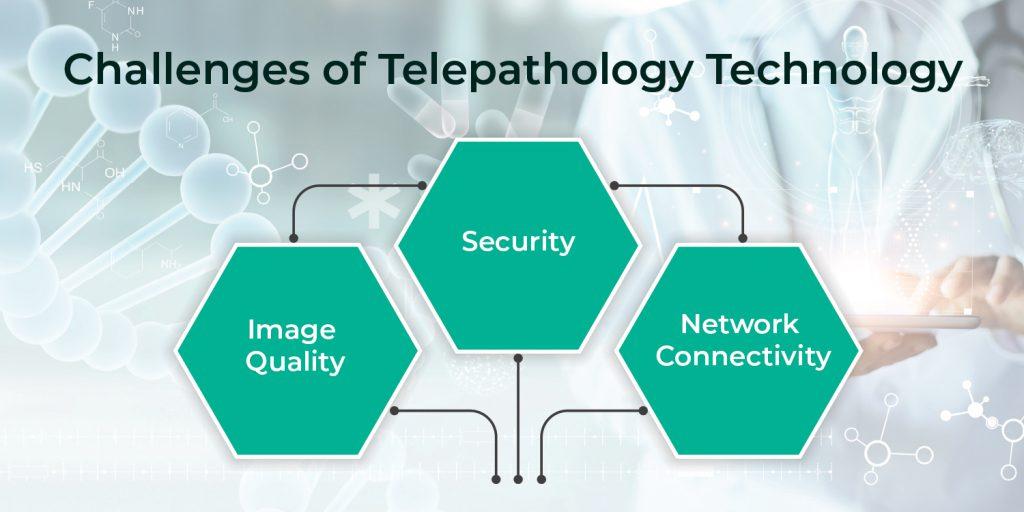Transforming Pathology: The Future of Telepathology in Healthcare
Telemedicine has become an indispensable tool for many healthcare professionals in recent years. But what about areas of medicine that need a more specialized touch? One field in particular that telemedicine services can transform is Telepathology.
Think of Pathologists as medical detectives. They investigate the cause of diseases by analyzing tissue samples. As such, it requires considerable precision and accuracy.
Telepathology, which involves using white-label telemedicine in pathology, can revolutionize the practice. In this article, we’ll explore how telepathology can transform pathology.
Table of Contents
- Telepathology In Telemedicine
- Telepathology Benefits in Healthcare
- What is Digital Pathology?
- Challenges of Telepathology Technology
- Emerging Trends in Telepathology
- Telepathology Applications for Remote Care
- Final Words
- FAQs
Telepathology In Telemedicine
Imagine you have a friend who lives in a faraway land, and you need their help to solve a puzzle. You can’t see each other in person, but you have a phone with a camera. You take a picture of the puzzle and send it to your friend. Even though they are far away, they can now see the puzzle and use their skills to help you solve it.
This is like how telepathology works! Instead of a puzzle, doctors take pictures of tissue samples using special cameras and send them to other doctors who may be far away. The doctors receiving the pictures can use their skills to help diagnose and treat the patient, even if they can’t see the patient in person.
Telepathology benefits doctors to work together, even in different parts of the world. It can lead to faster and better diagnoses, improved patient outcomes, and lower patient costs.
Telepathology Benefits in Healthcare
Telemedicine solutions is a game-changer. It provides a range of benefits in the healthcare industry, including pathology. With telemedicine, healthcare professionals can connect with patients remotely. It paves the way for a more accessible and inclusive healthcare system.
Telepathology involves the use of digital images to diagnose and monitor diseases. It can address some of the challenges faced in traditional pathology.
The telepathology benefits include the following:
- Improved access to care for patients who are too ill to travel,
- Increased accuracy in diagnosis through immediate access to high-resolution images,
- Cost savings by eliminating travel expenses for pathologists, and
- Better resource allocation for hospitals or health organizations.
Upgrade your telemedicine practice with telepathology. Improve diagnoses, collaborate with remote healthcare professionals, and access specialized expertise by transmitting high-quality images of tissue samples.
What is Digital Pathology?
Digital imaging in pathology involves capturing high-quality digital images of tissue samples and transmitting them over secure networks for remote diagnosis or consultation. This allows pathologists and other healthcare professionals to collaborate across distances and time zones, improving patient outcomes and streamlining pathology workflows.
Challenges of Telepathology Technology
When it comes to implementing telepathology, some challenges need to be addressed. These include:

Network Connectivity
Remote locations may not have adequate broadband coverage. It makes it difficult to share images. In addition, bandwidth fluctuations across different countries and regions can also impact service.
Image Quality
Another challenge is the quality of images. For pathologists to make accurate diagnoses, the images must be clear and of good resolution. Therefore, ensuring that image transfer uses sufficiently fast data rates is essential. Compression techniques can be used but can result in some loss of image quality.
Ready to upgrade your pathology services with high-quality pathology solutions? Look no further than VCDoctor. Our telepathology solutions leverage advanced digital imaging technology and secure networks to deliver fast, accurate diagnoses and improve patient outcomes.
Security
Finally, there are also issues related to data security that need to be considered when using pathology services. It is essential to ensure that all data transmitted over the internet is secure and appropriately encrypted.
Emerging Trends in Telepathology
One exciting trend is the development of AI-assisted diagnosis. Pathologists can now analyze vast amounts of data quickly. It leads to even faster and more accurate diagnoses.
Another emerging trend is the use of telepathology for remote frozen sections. This technique involves freezing a tissue sample and then analyzing it while it’s frozen. It can be instrumental in emergencies or cases where time is of the essence.
Pathology is also making it easier for pathologists to collaborate. By sharing high-resolution images and other diagnostic data, pathologists can work together. They can provide the best possible care for their patients, no matter where they are located.
Finally, the rise of telepathology is helping to democratize access to medical care. By making it easier for patients in remote or underserved areas to access diagnostic services, pathology is helping to bridge the gap in healthcare disparities.
Ready-to-use next-gen telepathology solutions. Contact Now!
Telepathology Applications for Remote Care
Are you tired of turning away patients who live in remote areas or cannot visit your clinic or hospital due to health concerns? Telepathology can help you bridge the gap and provide quality care to needy patients.
With advances in imaging technology and high-speed internet connections, it is now possible to diagnose patients remotely.
Telemedicine is beneficial for clinics and hospitals in rural or underserved areas. It allows them to provide access to specialists who may need to be more readily available in their region. Startups in the healthcare industry can also leverage telepathology. They can offer innovative remote care solutions to their customers.
Telepathology reduces the time it takes for patients to receive a diagnosis and start treatment. This can lead to better patient outcomes and increased patient satisfaction.
Moreover, Pathology can save costs for healthcare facilities. It eliminates the need for pathologists to travel to remote locations. It also provides a more efficient way to manage pathology samples, reducing the risk of sample loss or damage during transport.
In short, telepathology is valuable for clinics, hospitals, and startups looking to provide remote care solutions. Expand your reach, provide faster and more accurate diagnoses, and improve patient outcomes.
Final Words
Telepathology and other forms of remote pathology are changing the way healthcare works. It improves access to care, makes healthcare more efficient, reduces costs, and saves lives. As technology continues to evolve, telepathology will only get better. We can expect even more significant improvements in how pathologists work and deliver patient healthcare.
FAQs
1. What is telepathology?
Telepathology is digitalizing and transmitting high-quality images of tissue samples for remote diagnosis, consultation, or education purposes. It allows pathologists and other healthcare professionals to collaborate hassle-free.
2. What are the benefits of telepathology?
Telepathology offers numerous benefits, including faster diagnosis times, increased access to specialized expertise, improved patient outcomes, and reduced costs associated with traditional pathology services.
3. How does telepathology work?
First, digital images of slides are captured using high-quality digital cameras. They are then transmitted to remote pathologists and other healthcare professionals for diagnosis or consultation. The images can be sent via email, online platforms, or other secure systems.
4. Is telepathology secure?
Yes, telepathology is secure. The images are typically transmitted using secure networks and encrypted protocols, ensuring patient data is protected.
5. What are the limitations of telepathology?
Telepathology is not suitable for all types of pathology cases, particularly those requiring physical examination of the tissue sample. In addition, there may be regulatory and legal barriers to the use of telepathology in some jurisdictions.




